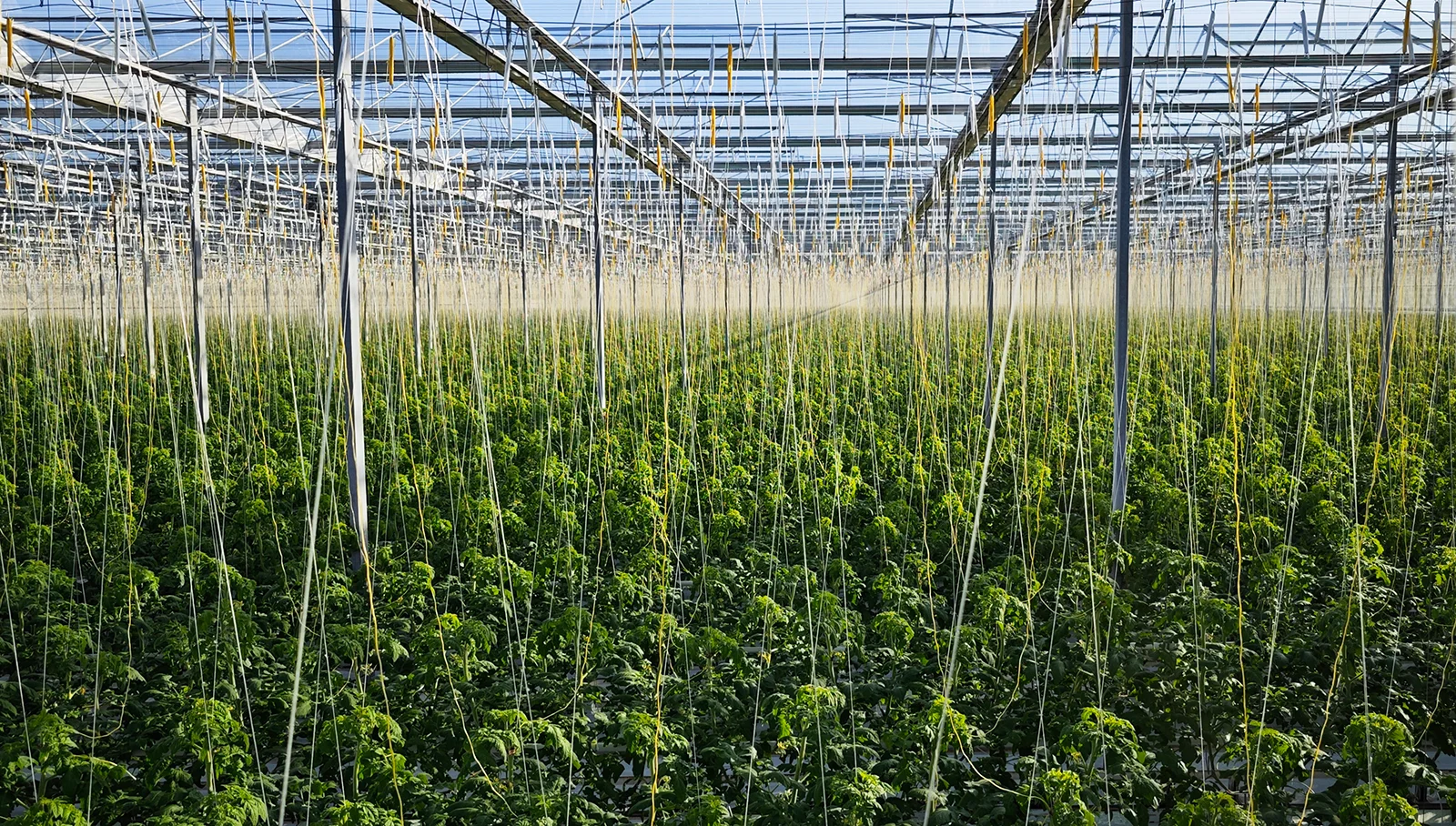A cultivation method that gradually became established
Today, 97% of Swiss tomatoes are grown in greenhouses, two-thirds of them above ground. As early as the 1990s, our company, Stoll Frères SA, was among the first in the country to adopt soilless cultivation techniques, inspired by avant-garde methods from abroad. This approach has since become widespread, offering numerous advantages: crop protection, climate control, resource conservation, and quality optimization.
A prolonged harvest despite the climate
The Swiss climate isn't particularly favorable to tomatoes, which require warmth. Heated, glass-enclosed greenhouses recreate these conditions and allow us to harvest tomatoes from April to October. But heating is energy-intensive, which is why we're investing in renewable energy solutions. It's worth noting that plants need carbon dioxide to grow: an ingenious system allows us to reinject some of the CO₂ produced by heating the greenhouses into the greenhouses.
Also read
A first in the canton of Vaud: a geothermal project to heat greenhouses
Resources used sparingly
Water and nutrients are supplied in a closed circuit, according to the plants' precise needs. The result: while outdoor cultivation requires approximately 200 liters of water per kilo of tomatoes, in our greenhouses we only consume 14 liters. In addition to conserving water, this approach protects the soil, which is not exploited.
Natural crop protection
Greenhouse and substrate cultivation, combined with new technologies, allows for precise crop control. Climate and irrigation are adjusted in real time, while plant health is continuously monitored. As a semi-enclosed environment, the greenhouse also has the advantage of limiting the presence of pests and allows us to introduce beneficial insects, which ensure both pollination and protection of plants against pests.
Healthy plants for tasty fruits
Tomatoes are ideally suited to growing on substrate, which improves their quality and flavor. The taste of tomatoes depends primarily on the choice of variety, harvest time, and the health of the plant. A healthy tomato devotes all its energy to developing its flavor, rather than defending itself against disease.

